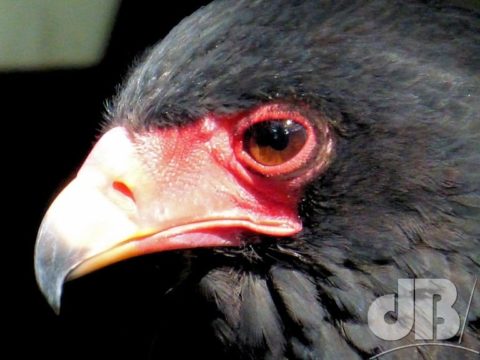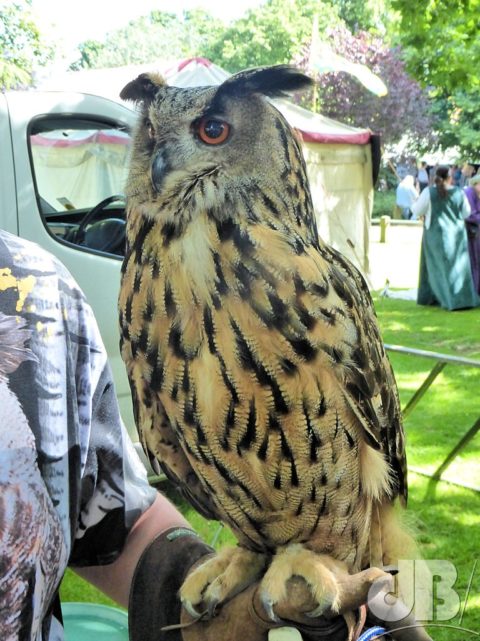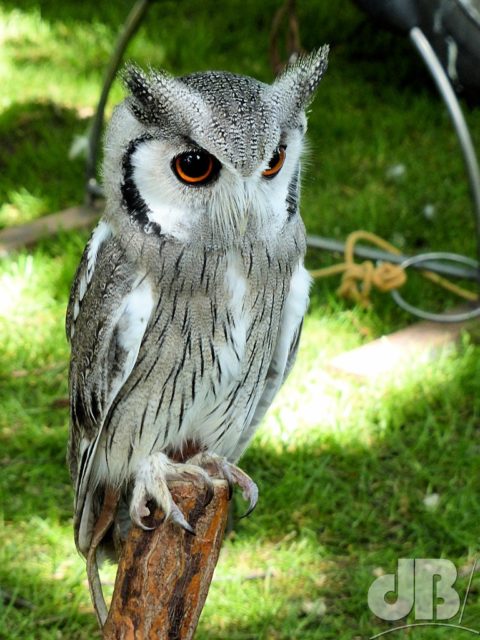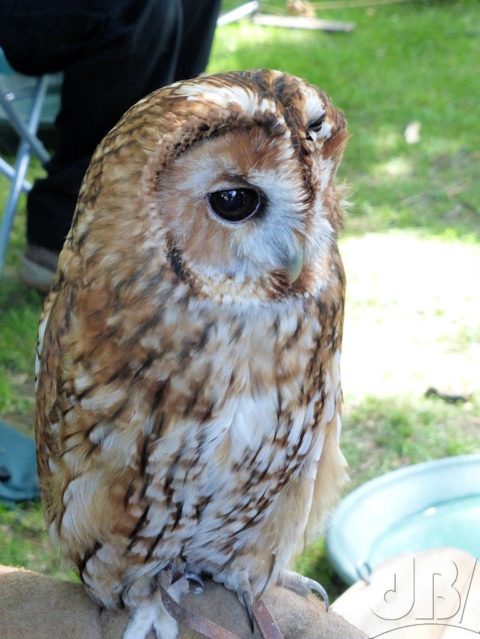The biannual Fen Edge Festival took place midsummer weekend 21-23rd June 2019. As ever, exciting but exhausting with lots of music and other events, stalls, etc. I side-stepped being an official photographer this year in favour of doing a bit more “musical” performance, but I still managed to get a few photos of the birds that The Raptor Foundation had brought along.

The Bataleur Eagle (Terathopius ecaudatus) is one of Africa’s snake-eating eagles. It’s a medium-sized eagle but up close and personal looks quite huge. Mainly black with distinctive white on the underside of its enormous wings. More distinctive still are its red face and feet. These are brightest when the bird is comfortable and happy, but it can withdraw the blood from these parts of its body when agitated leaving the face and feet yellow. This is presumably an adaptation that protects it from a snakebite. The blood being withdrawn from vulnerable exposed parts that might sucumb to venom.
The Bataleur that the team brought to FEF19 was a female called Captain Scarlet. The bird has a foreshortened tail which is an adaptation that allows it to walk backwards on the ground. This it does when hunting snakes. A snake will perceive another animal backing away as being vulnerable and likely prey.
The eagle backs away enticing in the snake and by this time it will have withdrawn the blood from its face and feet. It will strike the snake with its talons but if the snake tries to retaliate by biting the bird before its demise, there is no blood in the vulnerable extremities to carry the snake’s venom into the bird’s system. Once it has dispatched, the snake, the bird will eat it and in the meantime, the blood will flood back into its face and feet pushing out any venom through the puncture wounds!

The Raptor Foundation also brought along a European Eagle Owl (Bubo bubo) called Klunk. Its scientific name is one of those tautonyms I keep mentioning. The double of the scientific name like this means this species is the archetype, the type, of the family.

They brought with them a tiny Southern White-faced Owl (Ptilopsis granti) from Southern Africa, called, ironically, Goliath. Mrs Sciencebase and myself certainly heard this species in Botswana many years ago, but at the time they were known as White-faced Scops Owls.

There was a Barn Owl (Tyto Alba), and a Tawny Owl (Strix aluco). The female of this species is the one that calls out to the males “Too-wit” and the male replies “Two-woo”. You can usually then know if there are at least two Tawny owls, a male and a female around. Except, of course, confusingly the females also sometimes make the call back to themselves.